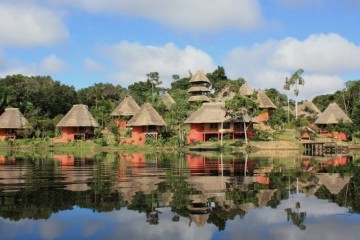
Napo Wildlife Center - Amazon Jungle Ecuador
Napo Wildlife Center is a premium eco-hotel in the Yasuní National Park of Amazonian Ecuador. Enjoy amazing wildlife & time with the local community.
The role responsible tourism can have in the protection of the Amazon!
The plight of the Amazon Rainforest seems to have been dropped by the mass media in the past week although, for those directly involved with the devastating fires, the struggle certainly hasn’t abated. Whilst the world’s attention moves on to the next big story, many people are simply resolving to boycott Brazilian products or, worse still, cancel plans for any upcoming visits. Yet shoving a problem in a cupboard and closing the door on it has never been an effective solution – and anyone truly interested in helping to protect this invaluable natural resource and its indigenous inhabitants will want to take a more serious and beneficial approach.
We take a look at the role responsible tourism can have in the protection of the Amazon and all the ways in which we can all help, either from home and when we visit.
Click the links below to skip through the article:
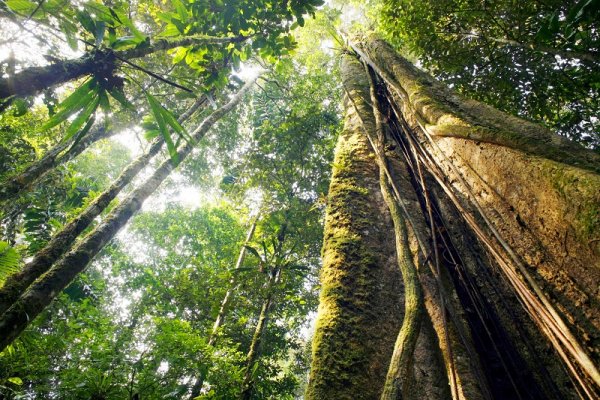
Giant rainforest tree, Ecuador
Click HERE to see our Amazon Rainforest Tours
The biggest threat faced by the Amazon Rainforest is undoubtedly deforestation. To date, it is estimated that the forest has lost 20% of its volume; gone too are thousands of unique species of flora and fauna. The Amazon is an extraordinarily fertile and mineral-rich pocket of pristine land and that’s why it’s coveted for farming and mineral prospecting. Clearing land to make way for ‘business’ is enticing to locals who are barely living above the poverty line. The enticement of a steady income leads them to destroy their own nature-filled homes although many don’t even realize the catastrophic long-term effects of their actions. The majority of the responsibility lies in the hands of the big corporations who entice them with promises of the big bucks and, of course, to consumers, worldwide, who are unwittingly helping to fuel demand for prime produce.
Knowing what the main issues in the Amazon lie will help us all determine what we can do to help. And ecotourism can play a huge part in this multi-tiered approach.
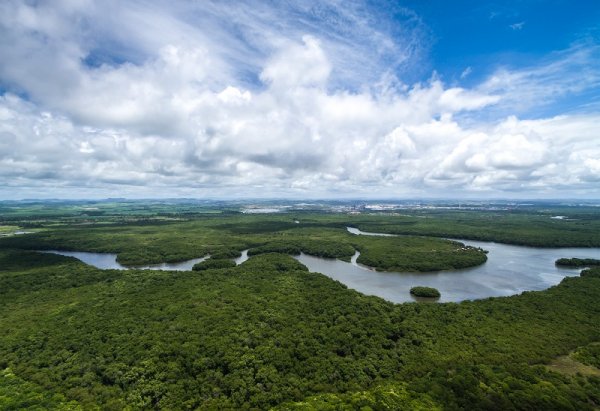
Amazon Rainforest, South America
Responsible tourism, by its very nature, involves raising environmental awareness and educating visitors on the unique ecosystems and threatened communities who live in a particular place, whilst leaving behind as minimal a footprint as possible. When it comes to the Amazon Rainforest, responsible tourism is absolutely pivotal. Yes, we’ll have some impact if we visit a vulnerable place but, according to the International Ecotourism Society, we could make a much greater impact if we don’t go at all. Apathy and distance, in this case, are the worst-case scenarios of all. Left to its own devices (or rather, that of its governing nations) the Amazon would continue to be exploited if tourism were to be taken out of the picture altogether and deforestation would continue in earnest, putting an even greater number of animals and plants in jeopardy.
When done right, responsible tourism can lend a helping hand protecting threatened wilderness. Give a country (or a local) a good enough reason not to chop down a tree, and an alternative income, and it may just want to protect it.
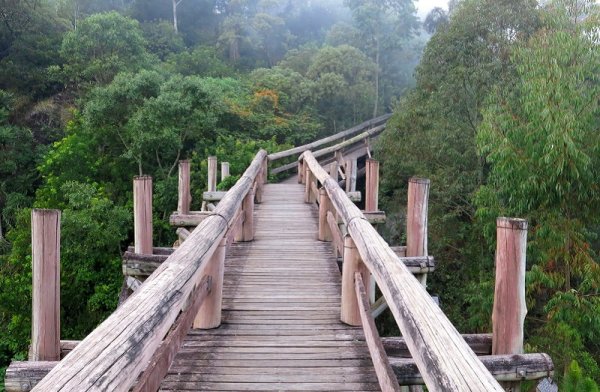
Amazon elevated trail path ecotourism forest, Brazil
We may hear a lot about food exports and manufacturing but, in reality, tourism is one of the largest (and fastest-growing) industries in the world. Over 1.4 billion people travel, every single year, generating spending of an estimated 8.8 trillion dollars. Worldwide, over the last five years, 20% of newly-generated jobs were in the tourism sector.
Imagine what would happen if we could turn every single traveller to the Amazon into an environmental activist? Whilst many are calling for a curb on tourism, we say why not harness this incredible power for the good of our planet instead?! Tourism is a force to be reckoned with and is not likely to shrink any time soon. We say let’s put ourselves to very good use!
WWF has already identified ecotourism as a potential combatant against deforestation and exploitation in the Amazon Rainforest and although the practice is in its infancy in remote and hard-to-reach areas, its success in more accessible areas is a fantastic sign of what can be achieved. This specific Ecuadorian story highlights the positive impact that responsible tourism can have, most especially when compared to its biggest competitor in the Amazon: oil prospecting.
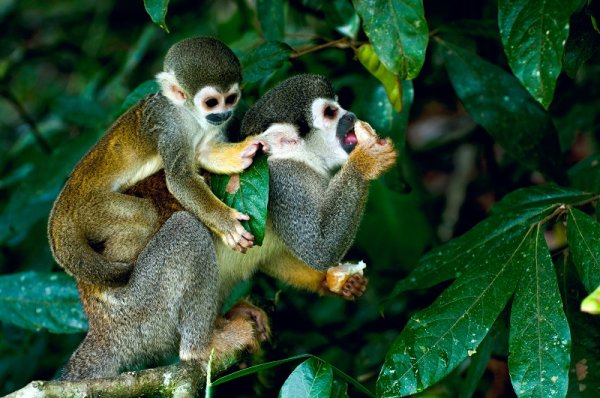
Squirrel Monkey in Amazon Rainforest
Click HERE to see our Tour to Napo Wildlife Center
There are many ways you can directly help the Amazon Rainforest right from your own home. Here are just a few examples:
From toilet paper to cardboard boxes, kitchen towels, serviettes and disposable paper plates and cups, these are as big a thorn to the environment’s side as disposable plastic, even more so if you’re not sure from where they originate. Don’t be lulled into a false sense of environmentalism by opting for recycled products either: all paper products fuel the industry so reduction here is paramount.
This is just an obvious tip that serves not only the Amazon but the planet, in general. By now, you will surely know that the majority of soy production in the Amazon is exported as cattle feed all over the world. Eat less beef and we’ll import less soy from the Amazon. Simple as that.
Aside from the obvious carbon emission of imported goods, you’re much more likely to be sure of a product’s provenance when you buy it directly from the grower or the manufacturer. Buy local first, wherever you happen to be.
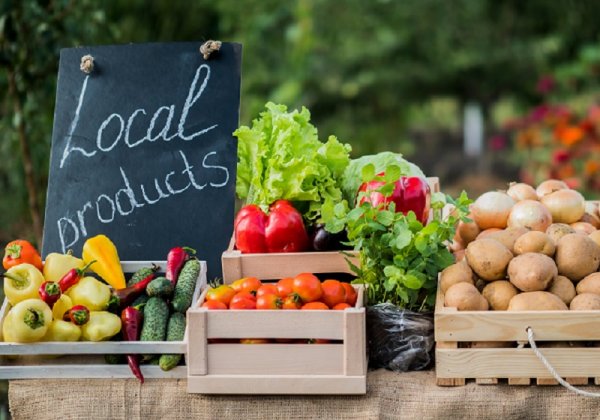
Local products on a farmers market
When it comes to the Amazon, there are always a few companies that continually come under scrutiny for all the wrong reasons. Amazon Watch calls them the ‘Dirty Dozen’ and although these are the most renowned American-run businesses, their affiliates are all over the world. In New Zealand, the most known companies/brands to avoid are Nestle, Shell, Barclays, Coca Cola and Citibank, the latter considered the world’s most environmentally destructive bank, especially when it comes to mining and logging in the Amazon Rainforest. See Ethical Consumer research the brands and companies you deal with the most.
Several respected agencies offer you the chance to contribute financially to their hard work, mostly in buying pockets of prime rainforest to stop it from being exploited. You can sponsor an acre through the Rainforest Trust or donate to Amazon Watch which funds initiatives to assist indigenous communities at risk in the Amazon.
Get involved, however often and in whichever way you can. Those Friday climate protests need to stay in the news and remain relevant, especially come voting time.
Alongside big companies that make the greatest impact on the Amazon (and our planet, in general) governments are the next-biggest threat. But they can also be our saviours if they implement environmentally conscious laws. Vote with judgement at the next election and let your government know that environmental protection is at the top of your priorities.
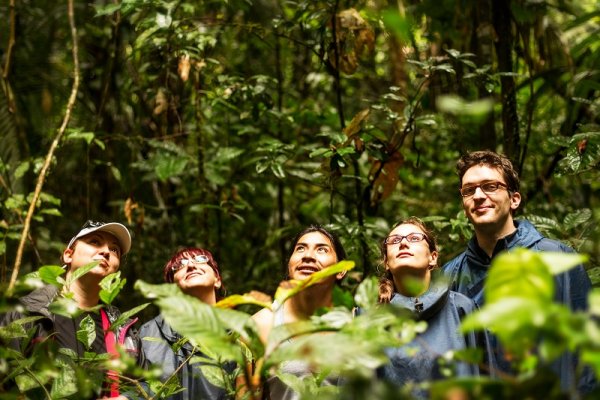
Cuyabeno Wildlife Reserve Sucumbios, Ecuador
Expeditions in the Amazon Rainforest can take many forms but, in essence, you’ll want to choose a trip that suits your own environmental goals. Generally speaking, less luxury does translate to a lesser impact so choose lodges that don’t have air-conditioning and those built from sustainable, natural products sourced locally. You’ll also want to feast on local produce (not imported treats) and should choose a responsible tour operator, who is really the most pivotal link here, given you’re not there to vet every lodge and/or guide yourself.
Tours should ideally be made up of just a handful of people (several small groups of people leave a smaller footprint than one much larger group) and they should be strict in following responsible tourism guidelines, which include staying on already-established walking paths, leaving nothing behind (whatever rubbish is produced is taken back out of the forest), and avoiding making excessive noise/smoking/eating/drinking on excursions away from the lodge, in order not to disturb the sensitive wildlife.
The Amazon Rainforest is an incredible place for wildlife lovers and although spotting animals here is actually hard work due to the thick wilderness, any encounter is a cause of celebration.
Just do your little happiness-scream on the inside, please…
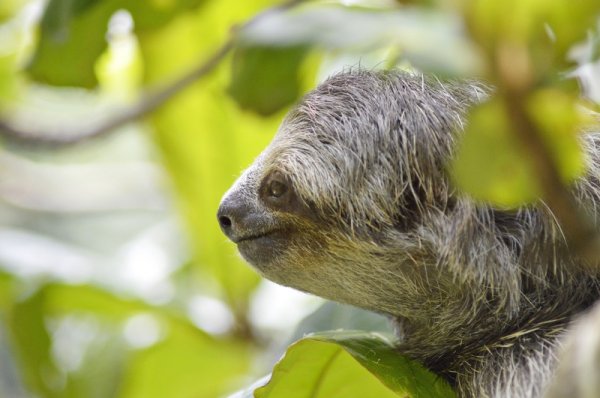
Sloth climbing a tree in the Amazon Rainforest, Costa Rica
Click HERE to see our Wildlife Tours
It’s also wonderful to visit local communities to learn more about their traditional way of life. However, steer clear of anyone trying to sell you souvenirs sourced from animals, be it skin, teeth or claws. Unfortunately, the animal trade is still ongoing and can really only be stopped by ceasing demand. Take nothing from the land and leave nothing in it that wasn’t there in the first place. Don’t disrupt the wildlife and simply admire it, from however close your guide directs you to be. Relish any contact you have with local communities; ask questions, enjoy their hospitality and culinary offerings and buy their incredible artefacts if you know they’re made sustainably.
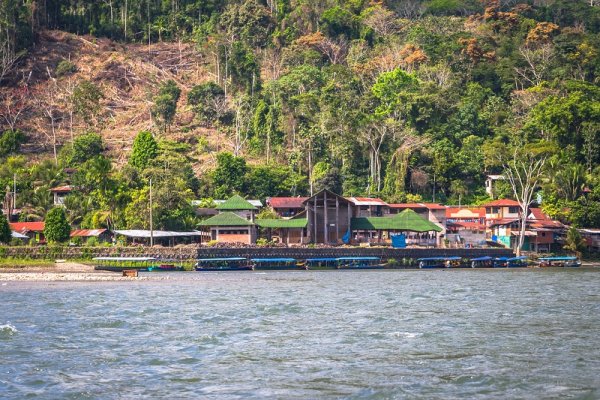
Small village in the Amazon Rainforest of Manu National Park, Peru
First of all, you’ll want to pack good-quality items that aren’t going to fall apart on you given the heat and humidity in the Amazon. Check out our Amazon Packing Guide for suggestions on what you’ll find most useful and, more importantly, how much you should take along. For sustainability, pack a reusable water bottle and avoid one-off plastics of any kind. It will also help tremendously if you take a sturdy bag for your rubbish so you can take out all the rubbish you accumulate personally. Help your lodge and tour operator by taking some of the refuse load. Also, please pack biodegradable sunscreen and insect repellent, so you don’t inadvertently pollute the Amazon during your visit.
Because, in this jaw-dropping treasure of a place, every little bit helps.
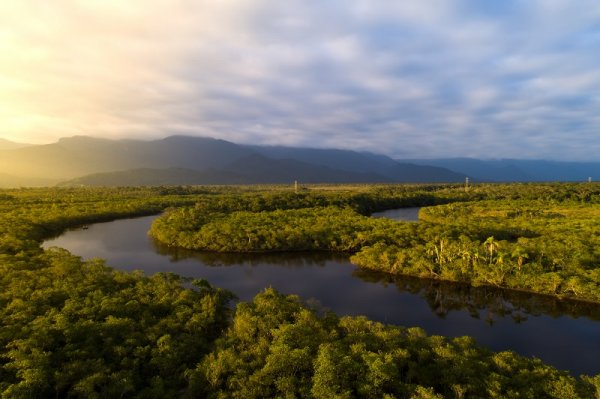
Amazon River
Click HERE to see our Amazon Rainforest Tours
See Viva Expedition’s array of unique Amazon Jungle experiences and ask us about the best responsible and sustainable destinations and lodges we’ve found in this incredible part of the world.
Laura PattaraLaura Pattara writes for Viva Expeditions with a special love for all things Latin America. She had guided overland tours across the continent, reached Machu Picchu five times on foot, and even dressed up as a giant toucan for Carnaval. With a degree in languages and two decades of global travel experience behind her, Laura has a long-standing love for the Andes, soaring condors, and a truly delicious empanada. |

Napo Wildlife Center is a premium eco-hotel in the Yasuní National Park of Amazonian Ecuador. Enjoy amazing wildlife & time with the local community.
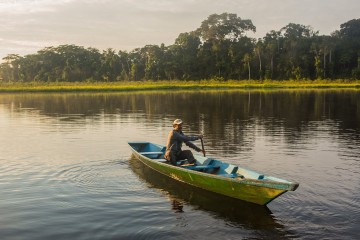
Stay in a secluded lodge deep in the Amazon jungle in Peru. Monkeys, macaws, capybaras, caiman & more. Combines well with a trip to Machu Picchu!

Small Ship Cruising: Small ship expedition cruises are a wonderful way to explore. Choose from Antarctica cruises & Sub-Antarctic Island cruises, Arctic cruises or sail the Patagonian Fiords, Galapagos Islands Cruising or New Zealand’s wonderful Fiordland.
Cruise aboard the elegant and luxurious Delfin III and experience the wonders of the Peruvian Amazon.